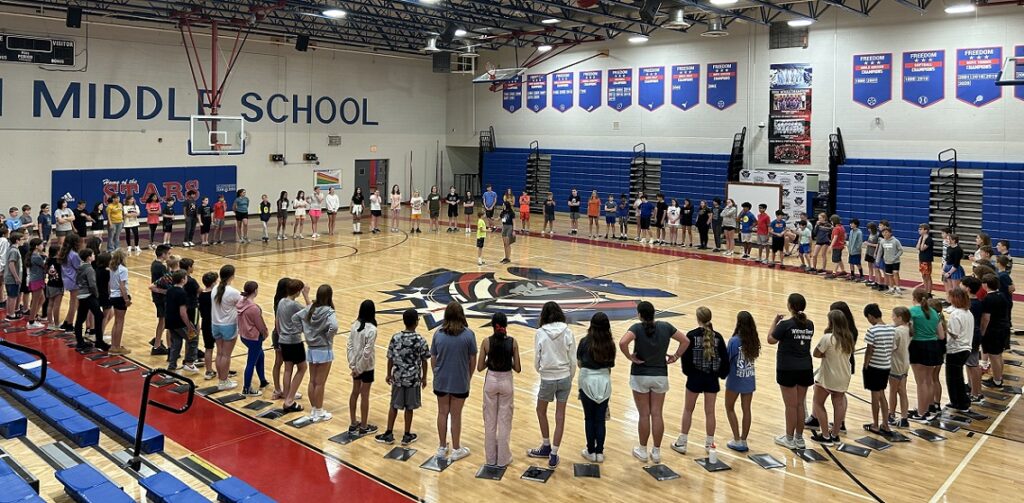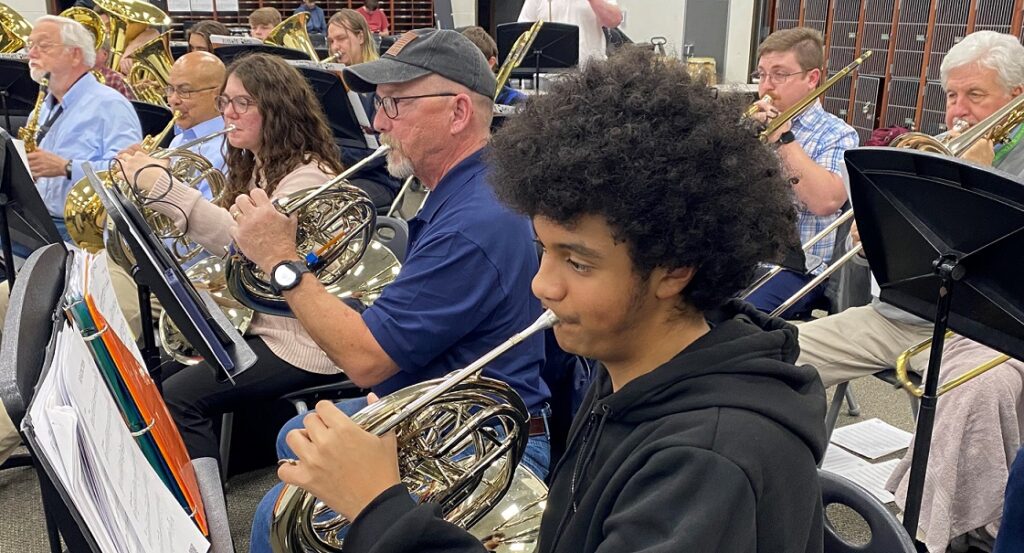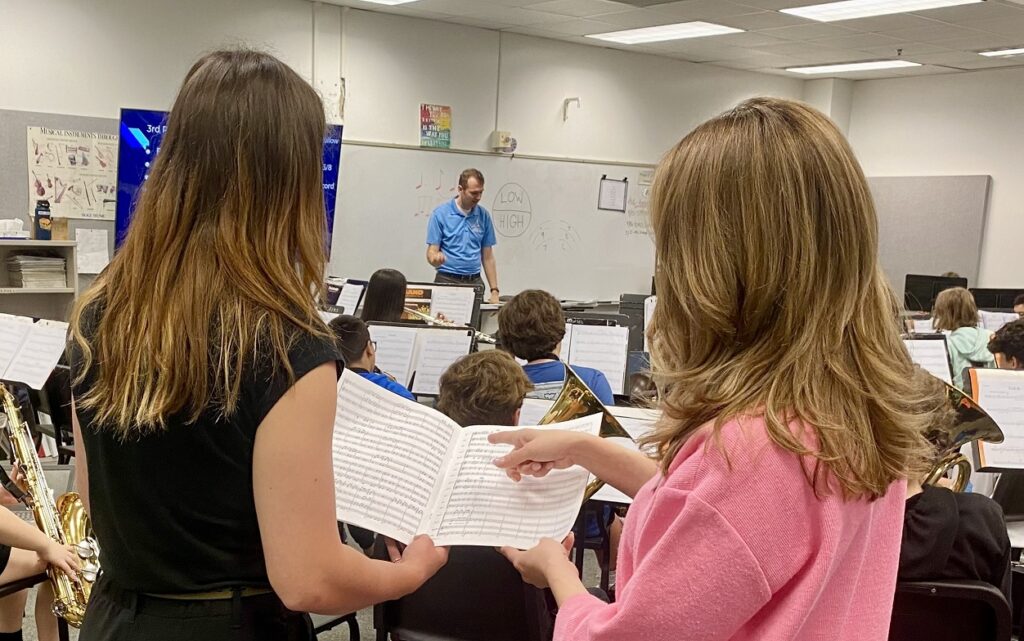Tagged Under:
Case Study: Practice Not Required
An unorthodox philosophy of no practicing outside of school works at Joliet Central High School.
Yes, you read the title of this article correctly — please proceed with caution because this topic may offend most music teachers.
I teach at Joliet Central High School, a low-income, high-needs population school and serve as the ensemble director, chamber ensemble director, general music teacher and even applied instructor. It’s a lot to handle.
Many of my students live in rented homes or in apartments, and their landlords may not allow them to play loud instruments. Students often share bedrooms with siblings and cannot practice in the common areas of the house. Other students share an instrument and cannot take the instrument home. And many of my students work outside of school. Playing instruments or singing after school or on weekends is not an option for most.
That’s why I have worked to build a program that does not require practice outside of school. I am aware of the limitations this presents, and I’m continually seeking ways to adjust the program curriculum and requirements, but right now, this is our reality.
When people learn about my “practice-not-required” philosophy, they have asked some pointed questions, including the ones below.
Are the upper-middle class and wealthier students actually practicing more?
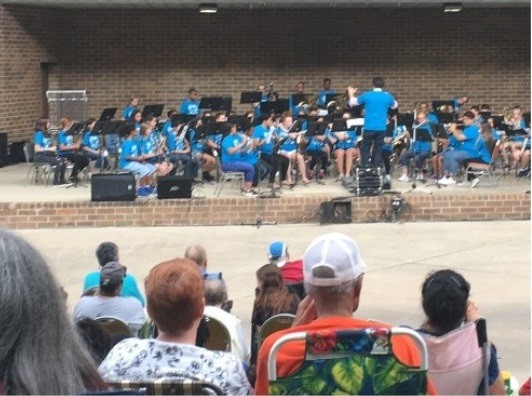 Anecdotally, I don’t think they are. In my experience and discussions with teachers in these areas, I think a few other elements are in place. Suburban schools may have lower instances of mobility and chronic absenteeism than a low-income area school. Less movement means that more suburban students go through an entire school system from kindergarten through high school compared to their low-income area counterparts. Wealthier students are also in the classroom more.
Anecdotally, I don’t think they are. In my experience and discussions with teachers in these areas, I think a few other elements are in place. Suburban schools may have lower instances of mobility and chronic absenteeism than a low-income area school. Less movement means that more suburban students go through an entire school system from kindergarten through high school compared to their low-income area counterparts. Wealthier students are also in the classroom more.
Other influences may contribute to a perception that more affluent students practice more, including a more extensive music staff and private lessons, both on- and off-site. I’m the only band director at Joliet Central High School. The only time we get additional help from a musician is when I host a student-teacher. Other schools with an assistant or a small staff may be able to work out homogenous groupings or instrument/voice specific sessions that allow smaller groups to learn about particular voice or instrumental techniques.
I’m not saying that suburban or wealthier schools don’t deal with a lack of practicing. This perception is just amplified in a low-income area.
Do students really need to practice outside of school?
It depends on your schedule, but if your groups meet every day or close to every day, I don’t think it’s necessary. And, I don’t think my students have time to practice. Furthermore, the minute we tell kids to practice, we turn music-making into a chore. Singing or playing their instruments is something that students have to do instead of something they get to do.
Here’s an example of the “chore” of practicing from my childhood.
I remember that I hated practicing when I was a kid. It didn’t seem to have any goals, and it was never-ending. After three years in the band, I made little progress, so my mother made me practice. My band director, Mr. Russell, recommended practicing 30 minutes a day. My mom set a timer for 40 minutes because she knew I’d complain and mess around for 10 minutes. I worked through our band book and some band music, and I got better. I was second to last chair trumpet in 6th grade and came back in 7th grade to take the first chair spot.
I felt better when I played, and I kept practicing because I now had a goal of competition or a result. It was not because I liked playing the trumpet or liked band music.
Eventually, I decided I wanted to be a band director, so I kept practicing. I practiced for hours on weekends and even started making money by teaching lessons and playing trumpet for wedding ceremonies. I graduated high school and enrolled in college, where I also had to continue practicing for a grade and practical experience.
After getting my first job, I slowed down my practicing schedule. I played in some community bands, taught lessons and played the occasional wedding, but playing my instrument was no longer the priority that it used to be. After a few years, six months would go by without me touching my instrument. Christmas and Easter gigs and the occasional in-class demonstrations would get the dust off of the instrument. Does this sound familiar?
I do recognize and appreciate the discipline, consistency and opportunities that came from practicing my instrument. I wouldn’t be a very effective music teacher without those hours of practice.
Besides me, two other high school classmates went on to become music teachers. I know that the other students in band did not practice much, if at all, outside of the classroom. And you know what? They still sounded pretty good. I even see some of them at our alumni band events.
How could you say this? I thought you were one of us!
I say it very cautiously. I am one of you!
I believe that the idea of every child must practice is a Utopian concept that we may never achieve. Practice might not be necessary for most students. Students, teachers and families are busier today and dealing with more stress. I firmly believe that schools should be resources for their community, but I also don’t think that we should infiltrate or force ourselves into people’s homes. We can undoubtedly give students the option and provide supplementary resources for those who ask for them. Still, when I’m physically at home, I want to be available for my family or pursue other personal interests. My students should have that same opportunity.
I also believe that the students who want to practice will find ways to make it happen. Exhibiting control only through what we have direct influence and impact on can reduce stress on all of us while still maintaining high learning standards.
How do we expect student musicians to get better?
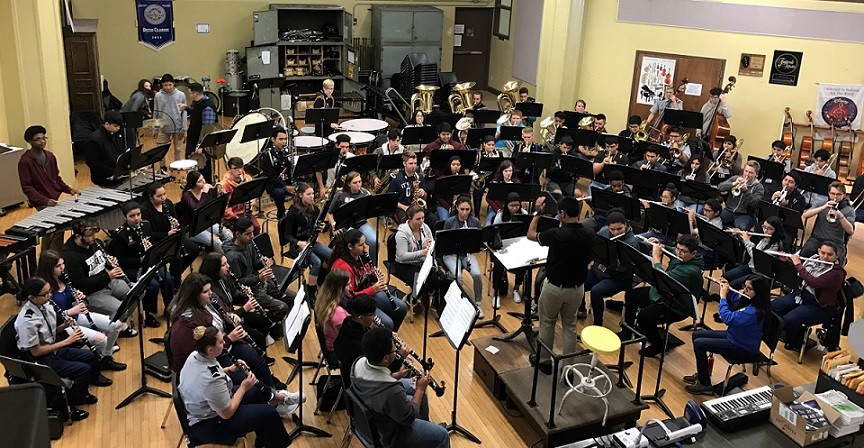 We can give students the skills to practice if they want to or have the time to practice. Explain your practice techniques and goals during a class. If your students haven’t heard you play, perform for them. I’m happy to say that I’ve had a resurgence in playing my instrument in recent years. I use it almost daily in class for a demonstration or to sit in the band when a student conducts.
We can give students the skills to practice if they want to or have the time to practice. Explain your practice techniques and goals during a class. If your students haven’t heard you play, perform for them. I’m happy to say that I’ve had a resurgence in playing my instrument in recent years. I use it almost daily in class for a demonstration or to sit in the band when a student conducts.
Perform the highest quality and most engaging and connected music that you and your group can agree on. Students will play music that they like. How many band directors have heard unprovoked outbursts of “Seven Nation Army” at the beginning or end of rehearsals? Save the pedagogy and concert literature for the classroom. If you want students to play outside of class, give them music that they know and like, which will have a higher chance of getting the instrument out of the case. I don’t know of many students or parents who want to repeatedly listen to a third trumpet part or a two-note alto part with no context. However, a solo they pick or even a melody from a pop song may encourage one of those students who cannot practice at home to be creative.
We can also avoid generic practice and reading logs. These become assignments for parents or an exercise in shared deception. Inaccurate times may be unintentional; my wife and I have had our fair share of forgetting to log our children’s 20 minutes of reading every day and then guessing the night before the reading log is due.
Consider individual and group goals and break down the necessary steps to achieve these goals. Involve the students in this process. For example, our decision to eliminate a practice requirement forced us to make a choice as a group — did we want to focus primarily on individual skills to develop soloists, or on making the best collective ensembles that we could have? Of course, we wanted both, but the students and I chose to focus on the group effort.
I am aware of the limitations of this, and I’m continually seeking ways to adjust the program curriculum and requirements, but right now, this is our reality.
Pack your class sessions and rehearsals with content from bell to bell. When meeting in person, alter the classroom environment and materials to resemble what a student might see in a private or small group lesson. Many method books and literature offer adaptable parts for various instruments.
You can also get creative with some existing methods. For example, alternate parts so all students, not just the top musicians, are experiencing a variety of challenges. In the case of technique, plan exercises that simultaneously hit multiple areas. I routinely use an articulation exercise, but I altered it to tune chords over fundamentals at the same time. I also utilize exercises that provide lip slurs for brass, chromatics for woodwinds and rudiments for percussion at the same time.
These ideas can lead to developing a practical, comprehensive routine for your ensemble.
After reflecting on your situation, consider developing a method that can help provide comprehensive performance-based music education for your students who are unable (or unwilling) to practice outside of ensemble rehearsal.
What are the elements of your routine?
It’s important to find materials or method books that fit your needs. I use Dan Moore’s “Important Ingredients,” Richard Williams and Jeff King’s “Foundation for Superior Performance” (affectionately known as the Blue Book), and the Bravo Winds Series Publications’ “Basic Training for Concert Band,” “Sonority for Concert Band” and “Harmony Training for the Ensemble.”
** Budget Tip: Check with your school to see if the music department can get in on money allocated for textbooks, saving you money in your budget.
** Slightly Related Budget Tip: If you have a pep band, see if your athletic department will purchase pep band music for use at athletic events, saving you even more money or freeing up cash for other sheet music or methods.
Every rehearsal includes exercises to improve airflow, tone production, articulation, intonation, technique, endurance and musical fluency. Most rehearsals include exercises to develop rhythm, sight-reading, theory and transposition. Some rehearsals include activities to address special techniques on specific instruments, such as percussion rudiments or stopped horn.
From the methods above, I designed a routine that hits most musical elements while avoiding monotony. We mix and match exercises and often work to combine tasks to save time. Note: percussion is on keyboards by default for all routine tasks unless specific parts are available, such as in “Foundations for Superior Performance.”
Here is a sample of my ensemble routine.
Here is a sample of my rehearsal plan.
Although most of our students will not play their instruments outside of a class or concert, the exercises and techniques included in our routine help create and improve beginning and intermediate individual musicians while improving the ensemble as a whole. I work with students who reach advanced levels on a case-by-case basis and provide them additional opportunities such as performing as soloists with the band.
A final thought: Focus on what is realistic for your group. Students can achieve technical prowess, but it may not be what a group excels in right away. Starting with the development of a good tone and a basic to intermediate sense of intonation can open many doors for a student and performance ensemble.
What do your groups sound like if they don’t practice?
Quality and opinions are always subjective, but what I can tell you is that our group received more opportunities by streamlining our goals and focusing on what we could do during classroom time to achieve those goals.
 When I first started this approach, I noticed a decline in participation in solo and ensemble contests. Participation in our district and state music education conferences remained the same, but we also had few students qualify for this over the past 20 years. However, our group performances increased in both quality and quantity. State festival invitations started coming in. College bands began inviting us to perform on stage with them, and we were even accepted into two national-level performances.
When I first started this approach, I noticed a decline in participation in solo and ensemble contests. Participation in our district and state music education conferences remained the same, but we also had few students qualify for this over the past 20 years. However, our group performances increased in both quality and quantity. State festival invitations started coming in. College bands began inviting us to perform on stage with them, and we were even accepted into two national-level performances.
Smaller sections of the band started to break off on their own to form smaller chamber groups. All of a sudden, our students were playing about 75 gigs a year in the community as flute ensembles, brass duets, jazz combos, etc.
I stuck to the no-practice concept. I let those small groups rehearse during the large band rehearsal. Those small groups kept going, and after a couple of years, I noticed that more students were starting to participate in solo and ensemble festivals again. We still have few students doing actual solos, but two years ago, we had a 20-year high for student participation. I also started providing opportunities for senior soloists, which has increased the level and quantity of student solo work.
Are you surprised by this twist ending?
By not requiring practicing, our students may have been inclined to practice more. The reasons vary. For some students, the success of the larger ensemble provided them with the drive to take their own performance seriously. They found time before, after and during school to get in a few repetitions of a difficult passage. Other students did not technically practice more but could use their time more productively in the ensemble. Other students were just defiant! If an adult told them to do something, they naturally would not want to do it. Once they were told that they didn’t have to practice, they were more inclined to let their intrinsic motivation take over, which sometimes led to playing the horn or singing outside of class.
For most students, the opportunity to perform in chamber groups with music they were able to choose was enough to increase the time spent playing and their performance ability.
This content is from the book “High Needs, Monumental Successes: Teaching Music to Low-Income and Underserved Students” by Don Stinson. Copyright © 2021 GIA Publications, Inc. Reprinted with permission.











